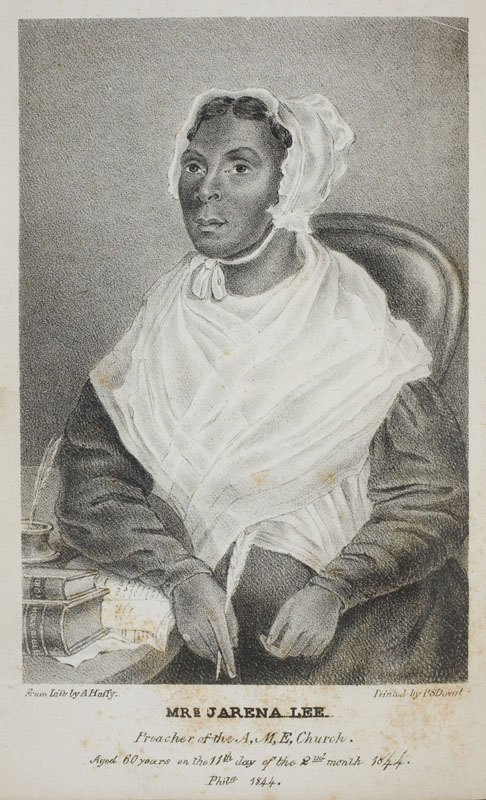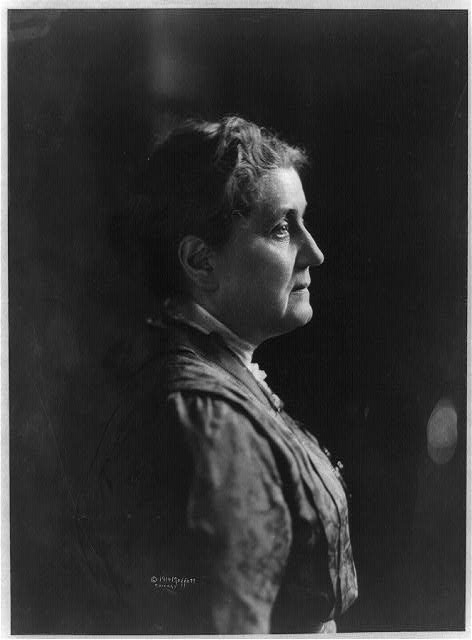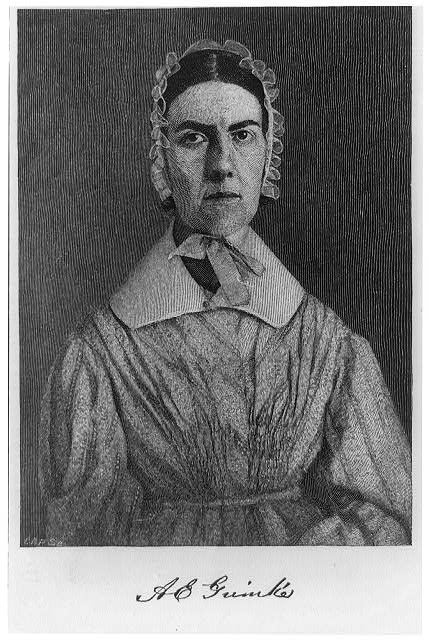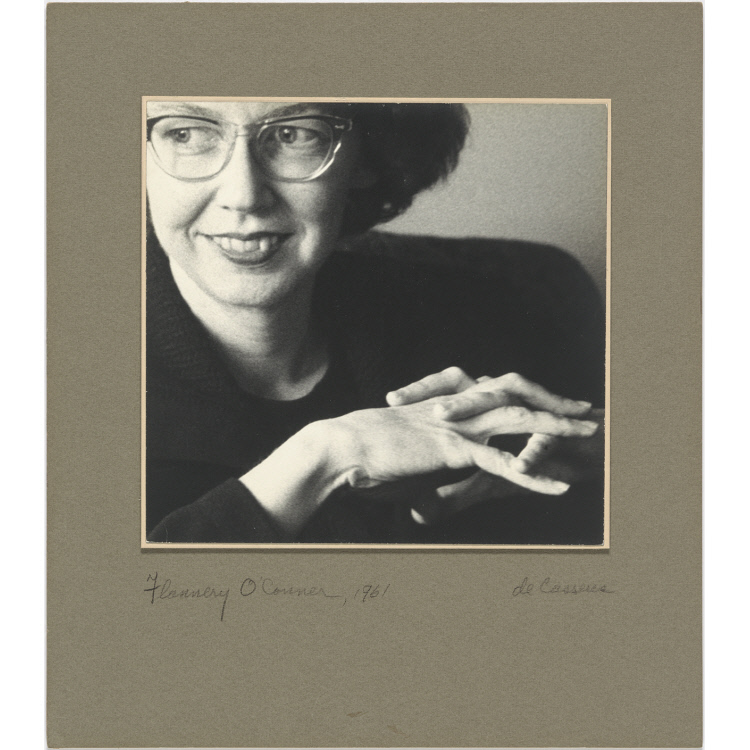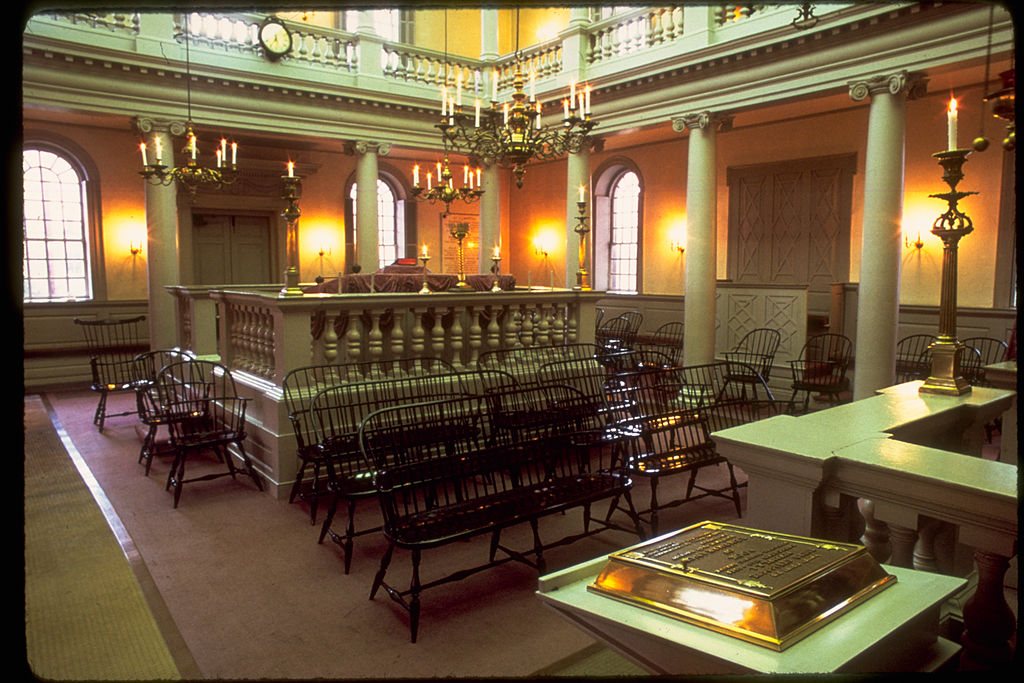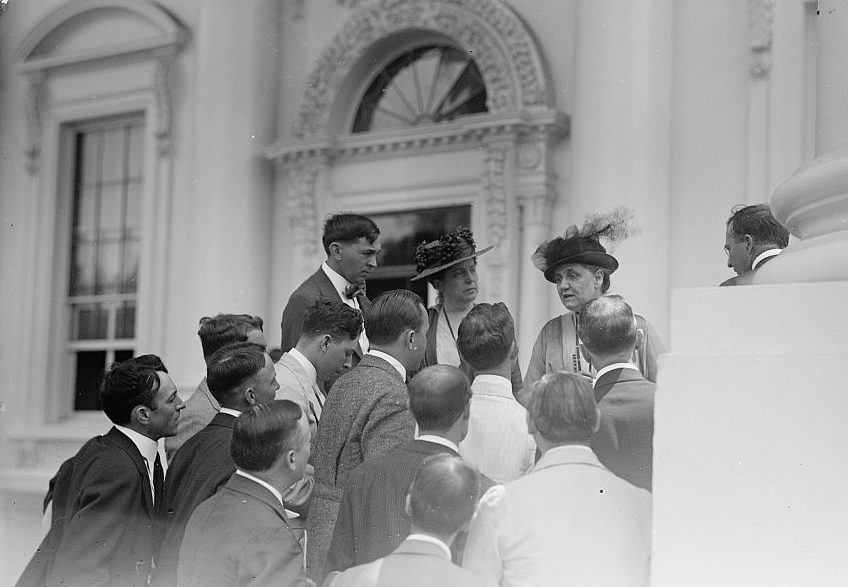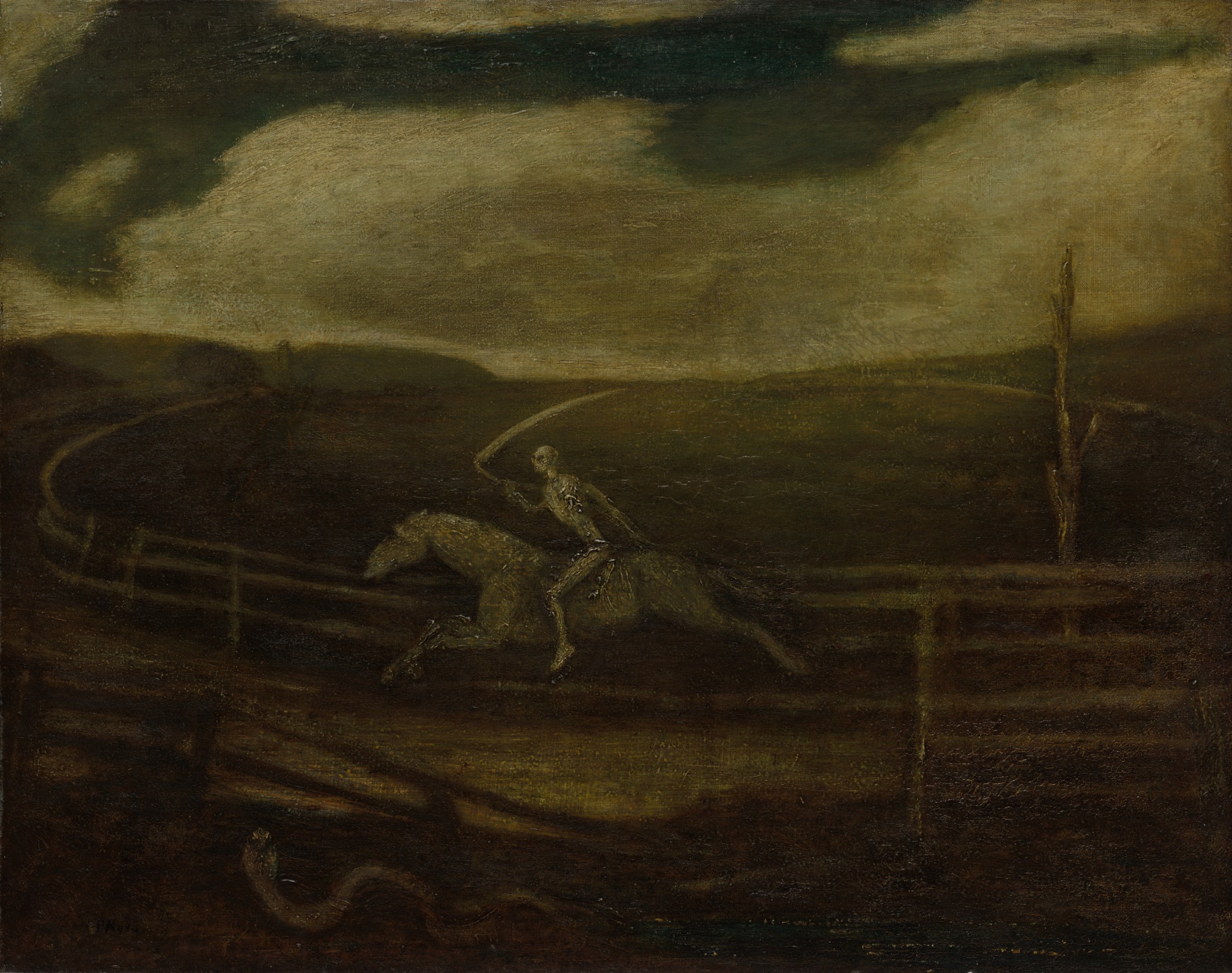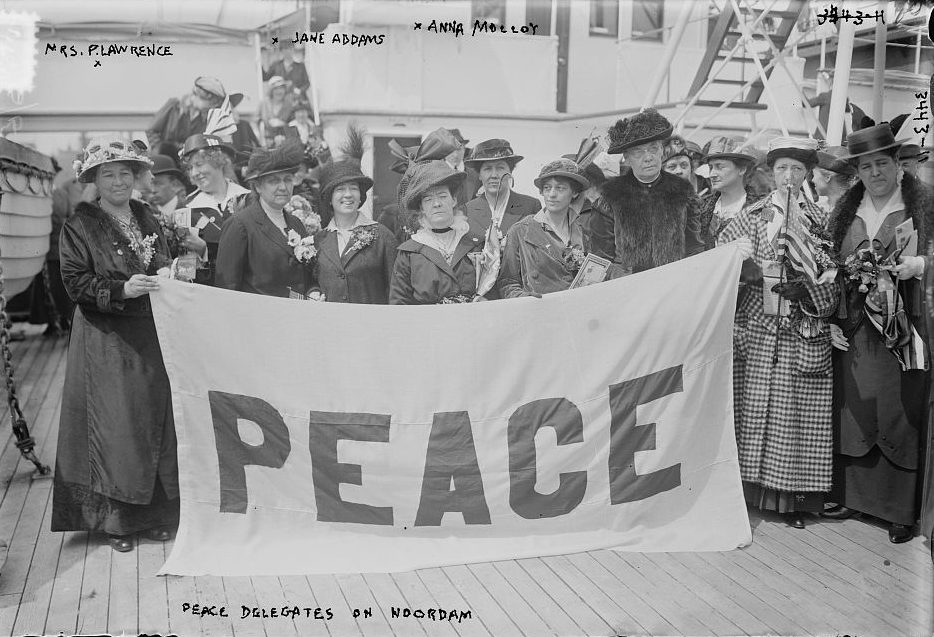Hull House
Chicago, Illinois
1889 - 1963
In 1889, assisted by her friend Ellen Gates Starr, Addams moved into the heart of one of Chicago’s largest immigrant neighborhoods to establish the first American settlement house.
The Social Gospel in Action
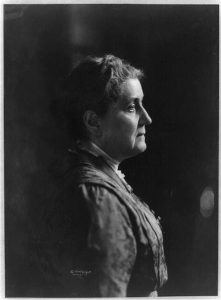
Jane Addams, c. 1914. Photographer unknown. Library of Congress Prints and Photographs Division, LC-USZ62-10598.
A proponent of the “social gospel,” Addams emphasized those elements of Christian teaching that pointed to the dignity of every individual and the duty to ‘love thy neighbor’ as practical and not merely spiritual exercise.
In an essay on “Religious Education and Contemporary Social Conditions” (1911), Addams criticized traditional churches and religious organizations for failing to appreciate that the souls they longed to save had immediate as well as eternal needs. She warned church leaders that in doing so, they had left the poorest and most vulnerable members of society open to the the moral and spiritual emptiness of the new doctrines of evolution, materialism, and economic determinism. Any approach that staked human happiness on these forces could not speak to the transcendent element of human nature. Yet the dominance of these new doctrines meant that there was still a “great opportunity” for religious educators to reach not only the poor and immigrant communities, but also the optimistic and secularized social workers who labored among them. Addams urged religious educators to harness their theology to compassion, to “transmute the comradeship of mutual suffering into a religious communion.” It was the “business of religion,” she argued, “not only to comfort and conserve, but to prophesy and fortify men for coming social changes.”
America’s First “Social Settlement”
In the 1880s, Addams traveled to Great Britain to study the “settlement house” movement. Although settlement workers often advocated for government reforms to improve living conditions in the crowded tenement housing of nineteenth century cities, their most important contribution came in the form of hands-on volunteer work.Essentially an urban missionary effort, the movement recruited young men and women from the educated classes to live (or “settle”) among the poorest urban communities. There, they could put their education to use, offering services to their neighbors ranging from daycare, language, and health and hygiene classes to lending libraries, lecture series, and other forms of cultural enrichment.
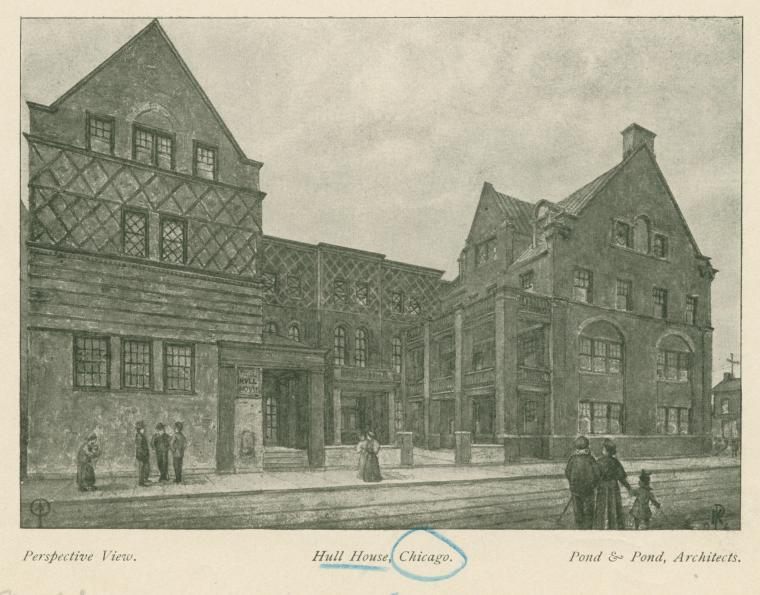
New York Public Library Digital Collections. Accessed September 18, 2016. http://digitalcollections.nypl.org/items/510d47e0-0451-a3d9-e040-e00a18064a99
In 1889, assisted by her friend Ellen Gates Starr, Addams established the first American settlement house, Hull House (so-called after the original owner of the mansion that served as the group’s base of operations). Located in the center of one of Chicago’s most densely populated and diverse immigrant neighborhoods, surrounded by tenement apartments on all sides, Hull House would eventually grow into a multi-site organization dedicated to social uplift and education for the poorest urban residents. For over forty years, Addams and her coworkers put their progressive, practical morality to the test, offering a variety of social services and practical educational opportunities to immigrants from Italy, Ireland, Germany, Greece, Russia, and Poland. Subjects covered included sanitation, midwifery, modern cooking techniques, and office skills as well as language and physical fitness.
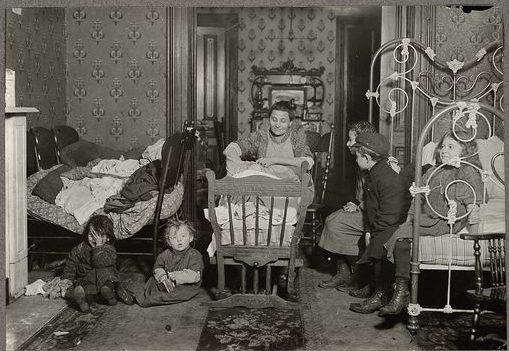
Living Room, Tenement Apartment Near Hull House, 1910. Lewis Hine. New York Public Library Digital Collections. http://digitalcollections.nypl.org/items/510d47d9-4d95-a3d9-e040-e00a18064a99
Driven by Addams’ vision of dignified democracy, these courses were supplemented with activities designed to uplift the human mind and spirit such as book clubs, lecture series, singing groups, and even an art studio and exhibition space. In these settings, Addams encouraged immigrant families to retain their traditional heritages while also adopting a respectful attitude towards those of others. She fostered a sense of unity within diversity at Hull House by welcoming all its members to share their traditions and talents with one another.
The Power of the Arts
Although Addams fiercely criticized the majority of religious education as irrelevant, she appreciated the use of music in such settings. Group singing of religious songs, she observed, reinforced a sense of community among the participants: choral singers not only gained a skill that could provide enrichment and beauty to their lives, they also learned to work together with the rest of the chorus members to create the harmonies necessary for a richer, more nuanced song. Music practice, then, was also practice in the art of community building so central to the success of Hull House’s mission, and Addams even went so far as to encourage one of her coworkers to compose a series of Hull House Songs specifically for use at the settlement.
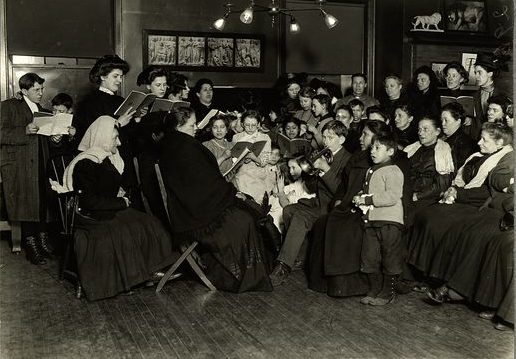
“The singing class at Hull House, Chicago, 1910.” Lewis Hine. New York Public Library Digital Collections. Accessed September 18, 2016. http://digitalcollections.nypl.org/items/510d47d9-4db2-a3d9-e040-e00a18064a99. As Hine noted: “This is characteristic of the friendly, constructive work that has always been done at Hull House with the neighbors.”
